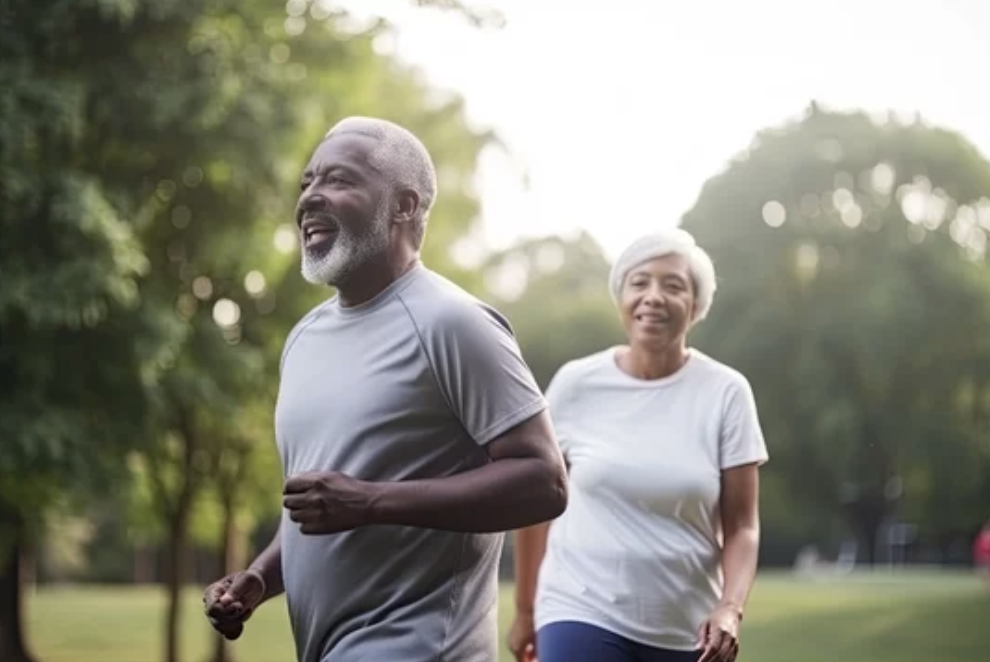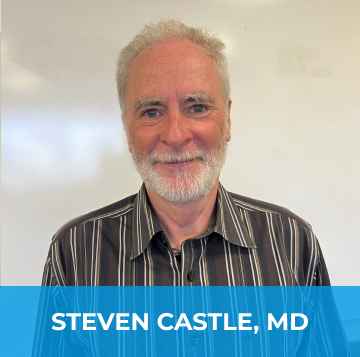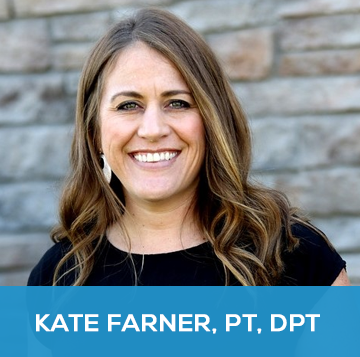Keeping you active for Healthy Aging
Knowing your activity level can help you choose activities and exercises that are best for you
What’s your activity level?
Find an activity, exercise or tip
that is right for you
Results Window

Hear from the experts
Published Studies Supporting the Benefits of Physical Activity for Older Adults
Extra hour of weekly exercise reduces risk of atrial fibrillation
Adding an extra hour every week of physical activity may lower the chance of developing the most common type of irregular heartbeat (arrythmia) by 11 percent, shows a new study presented at the annual meeting of the American Heart Association. The results showed that those with higher amounts of weekly physical activity were less likely to develop atrial fibrillation. Notably, the researchers say, even modest amounts of moderate to vigorous exercise, which can range from taking a brisk walk or cleaning the house to swimming laps or jogging, were associated with reduced risk. Specifically, study participants who averaged between 2.5 and 5 hours per week, the minimum amount recommended by the American Heart Association, showed a 60 percent lower risk of developing atrial fibrillation.
Weekly workouts may lower risk of dementia for people with high blood pressure
Vigorous exercise more than once a week can lower the risk of dementia for people with high blood pressure, a new clinical trial shows. People who engaged each week in vigorous physical activity had lower rates of mild cognitive impairment and dementia despite their high blood pressure, according to results published in Alzheimer’s & Dementia: The Journal of the Alzheimer’s Association. The protective impact of vigorous exercise on brain health was more pronounced for those younger than 75, results showed. “We know that physical exercise offers many benefits, including lowering blood pressure, improving heart health and potentially delaying cognitive decline,” said lead researcher Dr. Richard Kazibwe.
Sitting 30 minutes less per day may cut high blood pressure among seniors
Seniors wound up with lower blood pressure after they were coached to get up and move more often, a new study published in the journal JAMA Network Open says. Health coaching successfully reduced sitting time for a group of older adults by just over 30 minutes a day, according to a report. Sitting less led to a reduction of nearly 3.5 points in the seniors’ average blood pressure, researchers said. “Our findings are really promising because sitting less is a change that may be easier for people than increasing physical activity, especially for older adults who are more likely to be living with restrictions like chronic pain or reduced physical function,” said lead researcher Dori Rosenberg.
Consistent exercise improves sleep and reduces insomnia
Consistently exercising 2-3 times a week over the long term is linked to a lower current risk of insomnia as well as the ability to clock up the recommended 6-9 hours of shut eye every night, suggests a study published in the journal BMJ Open. Those who were persistently active were significantly (42%) less likely to find it difficult to fall asleep, 22% less likely to have any symptom of insomnia, and 40% less likely to report 2 or 3 (37% less likely) insomnia symptoms.
Small amounts of physical activity could help ward off stroke in the long term
Even people whose physical activity levels fall short of recommended guidelines, but who manage to do some during their leisure time, are likely to have a lower risk of stroke than their sedentary peers, suggests a data analysis published in the Journal of Neurology Neurosurgery & Psychiatry. “According to our results, all levels of [leisure time physical activity] can be beneficial for stroke prevention, including levels currently regarded as low or insufficient,” the researchers write.
Study identifies optimal daily steps for heart failure prevention in older women
A new study published in JAMA Cardiology reports that, on average, 3,600 steps per day at a normal pace was associated with a 26% lower risk of developing heart failure. To the contrary, each hour-and-a-half of sedentary time was associated, on average, with a 17% higher risk of experiencing heart failure. “Accumulating 3,000 steps per day might be a reasonable target that would be consistent with the amount of daily activity performed by women in this study” said the study’s lead author, Michael J. LaMonte, PhD.
Boost in cardio fitness may cut risk of prostate cancer
Even small increases in a man’s cardio fitness can significantly reduce his risk of developing prostate cancer, according to a report published in the British Journal of Sports Medicine. An annual increase in aerobic fitness of 3% or more is linked to a 35% lower risk of prostate cancer, according to researchers. And when researchers looked at the specific groups, they found that men with 3% or more yearly increase in fitness were 35% less likely to develop prostate cancer than those whose fitness declined. “Improvements in [cardiorespiratory fitness] in adult men should be encouraged and may reduce the risk of prostate cancer,” concluded the research team led by Dr. Kate Bolam.
Study confirms the mental health benefits of weight training for older individuals
Weight training can help reduce body fat and increase muscle strength and mass in older people, contributing to functional autonomy and avoidance of falls and injury. Furthermore, recent studies have shown that it can also benefit the mental health of older people, especially those who suffer from anxiety and depression. These benefits were confirmed by a study reported in the journal Psychiatry Research. “Resistance training has been shown to be one of the most effective non-pharmacological strategies for healthy aging. It promotes countless health benefits, including improvements to mental health,” said Paolo Cunha.
Cardiovascular Benefits Seen With as Few as 2,600 Steps Daily
Cardiovascular disease (CVD) benefits can be seen from as few as about 2,600 steps per day, according to a review recently published in the Journal of the American College of Cardiology. The researchers found significant risk reductions with 2,517 steps/day for all-cause mortality and 2,735 steps/day for incident CVD versus 2,000 steps/day (reference). “These findings can extend contemporary physical activity prescriptions given the easy-to-understand concept of step count,” the authors write.
Five minutes of extra exercise a day could lower blood pressure
Adding small amounts of exercise into daily routine, such as climbing stairs or cycling to the shops, could help to reduce blood pressure, with just five additional minutes a day estimated to yield improvements. The study found that replacing any less active behavior with five minutes of exercise could lower systolic blood pressure (SBP) and diastolic blood pressure (DBP). The study estimated that ‘clinically meaningful’ improvements could be achieved with as little as 20 additional minutes of exercise per day for SBP and 10 additional minutes of exercise per day for DBP.
What Exercises Can Help You Prevent a Fall?
April 2025 - Anyone of any age or ability can get stronger and improve their balance. And staying strong and having good balance are especially important for older adults. Why? Because staying strong and practicing balance skills are critical to managing your fall risk.
The stronger your legs, the better your balance, and the less chance you will experience a fall. If you do experience a fall, you are less likely to experience an injury.[…]
What are the exercises that older adults can do to help with strength and balance?
First, make sure you are doing the exercises safely and correctly. Below are exercise suggestions to help you strengthen your leg muscles and improve your balance. It is always a good idea to stand near something sturdy to hold on to, such as a kitchen counter, and have a chair nearby to sit and rest.
Exercises good for leg strength:
- Sit to Stand From A Chair
- Standing Heel Raises
- Lunges
Exercises good for improving balance:
- Standing on one leg
- Side Stepping
- Backwards Walking[…]
Is walking a good exercise for strength and balance?
Walking is a great form of exercise with many benefits, but it does not help your legs get stronger unless you are walking up and down hills or stairs. Older adults should combine a strength and balance program with a walking program for the greatest protection against a fall.[…]
How do I start adding strength and balance exercise into my routine?
A good plan is to alternate exercise days with walking days. On Monday you would do the exercises, Tuesday a walk (ideally 10-30 minutes) and so on.[…]
When should I see a physical therapist?
Sometimes working with a physical therapist is a good idea before starting an exercise program. A physical therapist can be especially helpful if you:
- Feel unsteady
- Think you may need a walker or a cane
- Have an issue that limits your ability to exercise, such as arthritis or an old injury
- Have severe pain that makes it difficult to move normally
- Have fallen in the past and are worried you will fall again[…]
Source: National Council on Aging. Full article and footnotes can be viewed here: https://www.ncoa.org/article/what-exercises-can-help-you-prevent-a-fall/
[For specific instructions on exercises for strength and balance, go to the UpRight home page and pick an activity level to find exercises tailored to you.]
Exercise Snacks: Fit Some Movement into Your Day
March 2025 - We all can benefit from regular physical activity. But how much? How often? What type? Research shows us we don't need to spend hours a day exercising to reap some benefits. […]
The Centers for Disease Control and Prevention recommend adults 65+ get at least 150 minutes of moderately intense or 75 minutes intense aerobic activity each week, as well as strengthening exercises twice a week and some activities to improve balance.1
[Physical activity] guidelines and recommendations are built by experts using years of evidence and hundreds of research studies. Sometimes, guidelines are too rigid for everyone to follow, but they can provide a foundation for personalization and flexibility. This is how “Exercise Snacks” came to be. An exercise snack is not defined in any guidelines. Just like referring to food, an exercise snack can be a spontaneous experience, created by someone for taste, ease, and convenience. […]
[As an example,] one sit to stand becomes 10…and you’re done with your snack; a casual stroll with a few “fast walks” for 25-30 steps; or even four more times rolling to sit up from bed, lay back down and sit back up again.
Exercise snacks are designed to be easy. There is no equipment to set up, and no movement to learn. They are designed to use movements you are already familiar with, and that you need to do during your daily routine. […]
When we participate in an exercise snack, we experience convenience, satisfaction, and personalization (my choice) that can keep us reaching for another “handful.” […] Exercise snacks are your choice. […] When you finish an exercise snack that you built and completed, you are in control.
Recent research has demonstrated that exercise snacks can add up to significant health gains when placed in our workplace, daily mobility, commute, or errands.2,3 These studies evaluated activities such as taking a flight of stairs quickly, walking briskly most of the way to the bus or mailbox, or even hustling down one specific hallway in your home on the occasion to travel down this route.
So, the next time your body is hungry for more physical activity—or even before it recognizes the hunger—feed it an exercise snack.
Source: National Council on Aging. Full article and footnotes can be viewed here: https://www.ncoa.org/article/exercise-snacks-how-to-fit-some-movement-into-your-day/
Review your Medications with your Medical Provider for Possible Impact on Mobility and Balance
by Steven Castle, MD
December 2024 - Falls are a significant issue for older adults and medications are known contributors. Errors in medication lists are common, especially after discharge from the hospital.
A tip is to keep an accurate list of medications grouped by disease categories and include instructions if you miss a dose (happens frequently). Keep a list of any medications discontinued and the reason why. If you have new balance or mobility issues (unsteadiness), review any newly prescribed medications with your medical provider.
Also, there are medications that have a higher side effect risk that are NOT recommended for older adults (called the Beer’s Criteria – click here for more information) that you should review with your provider.
Categories of possible risky medications that can impact mobility/balance control:
1. Sleep aids and mood or anxiety medications: these can cause dizziness, loss of balance, lightheadedness, or contribute to feeling weak or having poor awareness
2. Heart/Blood Pressure medications: can make you feel lightheaded when moving from seated to standing position or can cause you to feel weak/tired
3. Arthritis/Neuropathy pain medications: while pain control helps maintain activity, side effects need to be monitored as they can cause bad balance or contribute to poor awareness
4. Blood thinners and non-steroidal anti-inflammatory medications like Ibuprofen: while this category does not increase fall risk, it does increase your risk of injury if you do fall (acetaminophen is safe)
If you are prescribed one of these classes of medications, review your medication list with your medical provider and discuss using a non-pharmacological method to control certain diseases/symptoms when appropriate. An exhaustive list of risky medications is available on the Beer’s criteria list (see link above).
Leisure activities may improve longevity for older adults
May 2024 - Physical activity is vital for your health. Exercise helps you maintain a healthy weight and prevent chronic diseases ranging from heart disease to diabetes. The Physical Activity Guidelines for Americans recommend that adults get a minimum of 2.5 to 5 hours of moderate-intensity aerobic physical activity each week, or at least half that amount of vigorous-intensity activity.
To understand whether older adults benefit from various types of exercises, NIH researchers led by Dr. Eleanor Watts analyzed data from more than 272,000 participants in a national health survey. The participants were first surveyed in the mid-1990s. When they responded to a follow-up questionnaire between 2004 and 2005, they had an average age of 70.
Among older adults who exercised regularly, walking was the most common activity. That was followed by other aerobic exercise, cycling, golf, swimming, running, and racquet sports. Older adults who participated in any combination of these activities but did not meet the recommendations in the physical activity guidelines had a 5% lower risk of death during the study then those who were inactive.
Those considered active — with at least the amount of aerobic activity recommended by the guidelines — had a 13% lower risk of death compared with inactive participants. Participation in racquet sports and running was associated with the greatest risk reductions, but all activities provided benefit.
The risk of death continued to decrease with additional activity beyond the recommended levels. But these returns diminished as activity increased to high and very high levels.
“We found that all types of recreational activities that get people moving are associated with greater longevity,” Watts says. “So, the most important thing an inactive older adult can do to improve their health is find an activity that they enjoy and can stick with.”
Source: National Institute of Health. Full article can be viewed here: https://www.nia.nih.gov/news/leisure-activities-may-improve-longevity-older-adults
What is cross training and why should I be doing it?
by Kate Farner, PT
April 2024 - Cross training means incorporating different types of movement or activities into a routine, instead of only focusing on one type. The goal is to impact and improve our bodies and our brain.
When we do physical exercise, we are focusing on our skeletal and cardiac muscles. When we do hobbies or creative activities, we are focusing on skeletal muscles and our brain. Yes, our brain is technically a muscle; and can be trained like a muscle. When we challenge our brain, it can get stronger, and those changes can have the potential to slow the cognitive ageing process. Humans are resilient. When we neglect our muscles (of any type) they get weak and fragile. The right amount of training can improve our tolerance and capacity to perform activities.
It is not a new idea that the benefits of physical exercise go beyond physical health. In 1887, The New England Journal of Medicine stated that “a healthy brain lives inside a healthy body.”
Performing aerobic exercise, resistance training, balance challenging tasks and creative activities is the best combination of cross training. Aerobic exercise has been shown to improve cognitive ability, resistance training is most effective for memory, balance training improves spatial awareness and creative tasks keep the mind sharp.1
Cross training can be fun and energizing; by adding variety to your day or week. If a walk is your go-to for exercise, try a new type of activity each week in addition to your walking. Cross-training option examples:
Aerobic: Dancing, Tennis, Swimming, Zumba, Hiking
Resistance Training: Golf, Cycling, Bowling, Fitness class, Pickle Ball
Balance: Yoga, Tai Chi, Martial Arts, Fishing, Dancing
Creative tasks: Gardening, Sewing, Puzzles, Music, Card games, Arts and crafts
1 Colcombe S, Kramer AF. Fitness effects on the cognitive function of older adults: a meta-analytic study. Psychol Sci. 2003;14:125–130
4 physical activity tips for older adults
Don't forget strength and balance training
March 2024 – Regular physical activity is great for your mental and physical health. It also helps you stay independent as you age.
The Physical Activity Guidelines for Americans recommend that you aim to exercise at least 150 minutes every week at a moderate pace, or 75 at a more vigorous pace. The guidelines also recommend that older adults do muscle-strengthening activities at least 2 days a week.
Not sure how to get started? These tips can help.
1. Talk with your doctor. Almost anyone, at any age, can exercise safely. If you're concerned about starting an exercise routine, talk with your doctor. Ask whether there are activities you should avoid and whether any health conditions you have might affect what exercises you can do safely.
2. Start gradually. Begin with low-intensity exercises like walking. Be sure to drink plenty of water before, during, and after your workout.
3. Develop a well-rounded routine. Include the four main types of exercise:
- Endurance exercises increase your breathing and heart rate. Brisk walking is a good option.
- Strength exercises, like lifting weights or using a resistance band, make your muscles stronger.
- Balance exercises can help prevent falls. This includes standing on one foot.
- Flexibility exercises, like yoga, stretch your muscles and help you stay limber and maintain mobility as you age.
4. Move throughout the day. Every day presents opportunities to move more. For example, use the stairs instead of taking the elevator. Or park far away from the grocery store entrance instead of in the closest spot.
Source: National Library of Medicine https://magazine.medlineplus.gov/article/4-physical-activity-tips-for-older-adults
Heart Health Month and Falls
by Lindsey Valenzuela, PharmD
February 2024 – February is heart health month! It’s an opportunity to refresh your knowledge on how you can make small changes every day to avoid a heart attack or stroke. This may be adding more fruits and vegetables to your diet or moving more throughout your day.
How can you take this opportunity to improve your heart health while also helping to avoid falls? First, it’s important to acknowledge any fears you may have of falling. People who have fallen in the past or have been told they are at high risk for falls may avoid the movement that will improve their heart health and actually will help to improve balance and stamina which reduces the risk of falls. Even short bursts of activity can reduce blood pressure and improve muscle mass. While we are all encouraged to get 150 minutes of aerobic activity per week, small changes to start make a big difference. Start by removing hazards in your home (loose floor coverings and clutter), making sure you have well fitting shoes, and do it during well-lit times of day.
Those with existing heart conditions may be on medications that can cause an increased risk of falls. Medications, changes in blood pressure, and frailty can impact more than 60% of adults with heart disease. Medicines used for your blood pressure, depression, anxiety, or abnormal heart rhythms can cause changes in blood pressure when you go from laying to sitting to standing. Remember to go from sitting to standing slowly while holding onto a stable surface. Any feelings of being faint or dizziness should prompt you to sit and talk to your provider. Staying well hydrated helps to avoid many side effects of these medications and reduces the risk of falls with activity.
Small changes lead to big wins, whether we’re talking about our heart or falls. Get started safely!
Strong association shown between being sedentary and dementia risk
January 2024 – Based on data from nearly 50,000 adults in the United Kingdom, NIA-funded researchers have shown an association between dementia risk and daily sedentary behavior. Though the study cannot establish a causal link, it does support the idea that more time spent not moving — such as sitting while watching TV, working on a computer, or driving — may be a risk factor for dementia. The findings were published in JAMA.
A research team led by scientists at the University of Southern California and the University of Arizona looked at data from the UK Biobank. Focusing on adults 60 years and older who wore devices that measure movement, called accelerometers, the researchers used machine learning to predict what patterns of accelerometry data truly predicted sedentary behavior. They then used hospital and death registry data to determine which of these participants developed dementia in the following years.
Median duration of sedentary behavior was just over nine hours per day, similar to results of studies on Americans. The analysis also indicated association between sedentary time and dementia risk. Most notably, the risk for dementia increased greatly for adults who were sedentary more than 10 hours a day.
Though this study did not test the role of physical activity and dementia risk, UK Biobank data has also been used to show a healthy lifestyle is associated with lower risk of dementia. These recent results support the need to study whether there is a causal link between sedentary time and dementia risk and what aspect of sedentary behavior increases that risk.
Authorized reproduction from National Institute of Health website. Source: https://www.nia.nih.gov/news/strong-association-shown-between-being-sedentary-and-dementia-risk
Reducing risk of drowsiness with over the counter medications
by Lindsey Valenzuela, PharmD
December 2023 – Many of us turn to our local pharmacy for over the counter (OTC) products to help with sleep, allergies, the common cold or flu, or pain, which can be daunting. Older adults are particularly vulnerable to the side effects of medications including falls. While OTC medications may seem harmless because they don’t require a prescription, there are some things to consider when shopping.
1. Avoid combination products: When taking a combination product, there is a risk of doubling up on a similar drug without knowing it. For example, combining cough/cold medications which often include diphenhydramine with a sleep aid, such as Benadryl (the brand of diphenhydramine) would double your dose. These types of medications cause drowsiness which may increase your risk of falls. Consulting with a pharmacist can reduce overlap.
2. Use one pharmacy: When you use one pharmacy for medications, your pharmacist can better help you choose OTC medications that work well with your prescription medications to avoid the danger of falling due to drowsiness.
3. Start low and go slow: If you must use multiple OTC medications, add one at a time at the lowest suggested dose. Allow yourself time to understand how it makes you feel and only add other medications or increase the dose if it is truly needed.
Never hesitate to talk to your pharmacist when choosing an OTC medication. They’re close by, free to you, and have a great deal to share.
Why keeping active is the best ‘pill’ for longevity
by Steven Castle, MD
September 2023 – As we evolved from quadrupeds to bipeds, our brains grew significantly. While we were hunter-gatherers and maintained activity our brains stayed healthy over our life course. Of note, it was often a grandmother that led the hunter - gatherer team, and had to remember where to go, what to watch out for, what to look for and how to get back. As we became more sedentary we opened our brains to more dementia-related diseases. Sedentary, because I am retired and do not want to do anything or after a hospitalization or a death of a family member. Increasing physical activity (national Physical Activity Guidelines are 150 min/week of walking, strength training and balance training) helps restore the integrity of the blood-brain barrier to help keep stuff out of our brains that contributes to dementia. It is the most successful behavior change to support longevity and helps us keep doing “what matters” to us. Any increase in physical activity significantly reduces the risk of developing dementia. And, when we exercise we look younger than our counterparts.
Moving past the social stigma of using an assistive device
by Kate Farner, PT
September 2023 – The history of social stigma dates to ancient Greece where the term was generated “to refer to bodily signs to expose something unusual, a holy elder, or from the medical standpoint as a physical disorder.”1 Many older adults view a mobility aide or assistive device as a limitation and label that highlights their difficulties. You commonly hear “I only use it inside so my friends don’t see,” “old people use them,” and “I don’t want anyone to feel sorry for me.” Most individuals see them as a hinderance or inconvenience that limits access to the places and activities that they want to do. When in fact, they will rather refuse to go to events or environments where they would have to use assistance from family or use a mobility aide. The discussion about use of aides & devices needs to occur more frequently and earlier in a plan of care, led by medical professionals, family members and community resources, to encourage independence and inclusion at events. Testing can help determine need and type of assistance necessary, and many older adults will find that they can be more independent and improve their energy efficiency with an aide or device. Appropriate use of mobility aides or assistive devices can help individuals do more of what matters and keep them independent in their homes longer.
1 Goffman, E. (1990 [1963]). Stigma: Notes on the Management of Spoiled Identity. London, England: Penguin Books.
3 days ago
1 week ago
1 week ago
2 weeks ago
2 weeks ago







